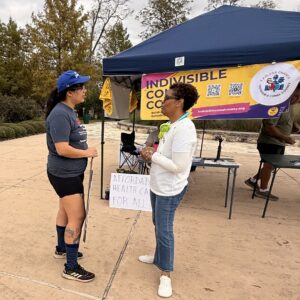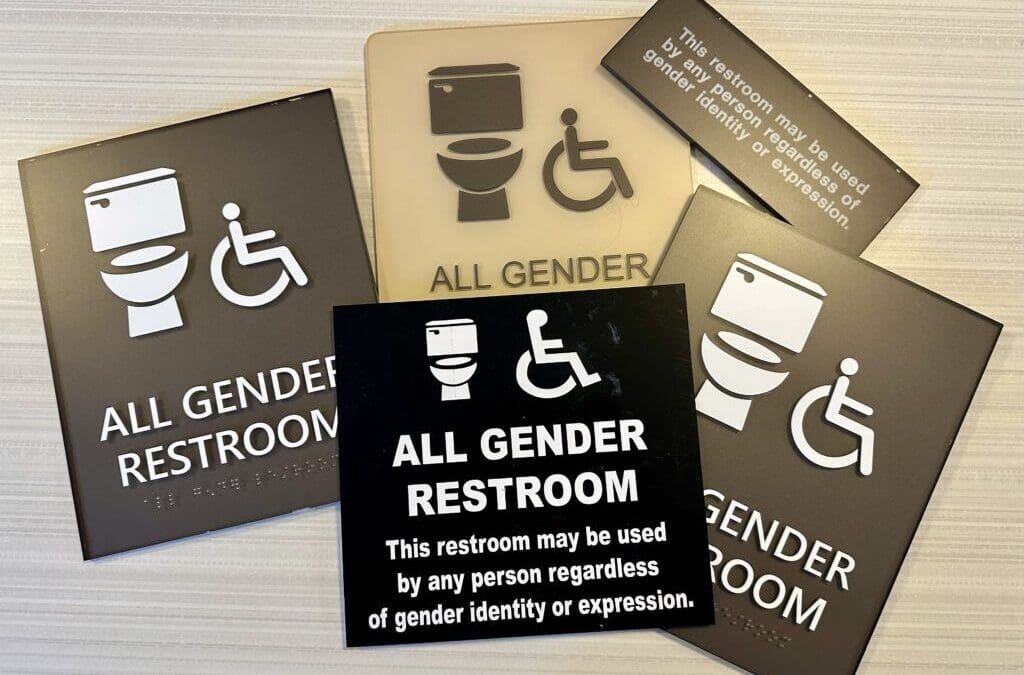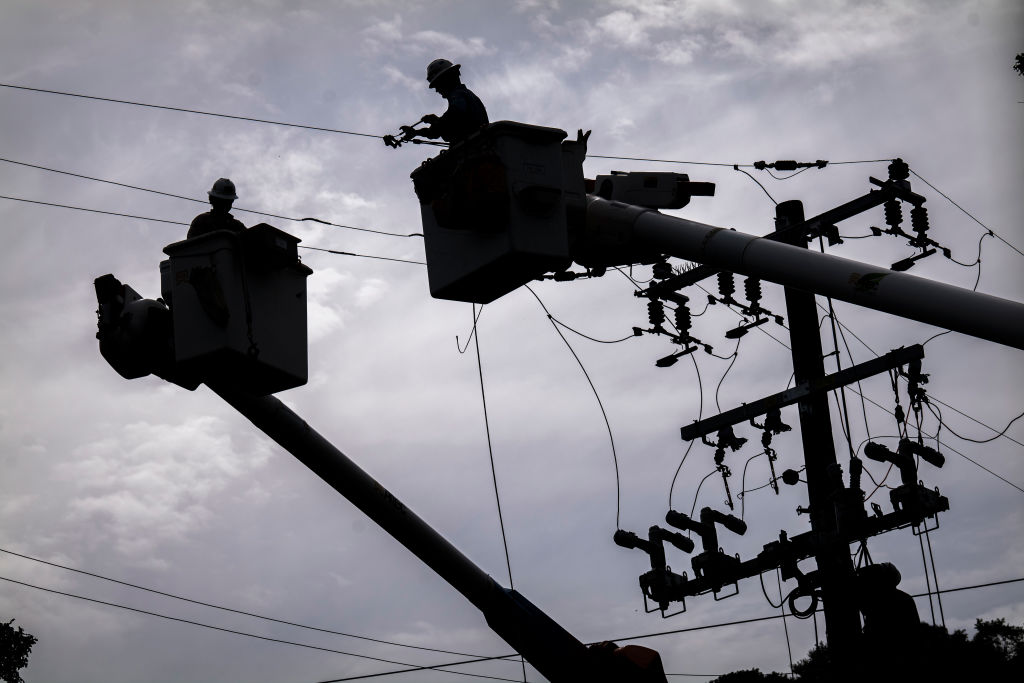
Jackson Katz Calls on ‘Every Man’ to End Men’s Violence Against Women
April 4, 2025
“Can’t Look Away”: Documentary Examines The Dark Side of Social Media
April 4, 2025Ohio’s so-called ‘Protect All Students Act’ does the opposite—endangering transgender students while erasing years of progress in inclusivity.
Ms. Classroom wants to hear from educators and students being impacted by legislation attacking public education, higher education, gender, race and sexuality studies, activism and social justice in education, and diversity, equity and inclusion programs for our series, ‘Banned! Voices from the Classroom.’ Submit pitches and/or op-eds and reflections (between 500-800 words) to Ms. contributing editor Aviva Dove-Viebahn at adove-viebahn@msmagazine.com. Posts will be accepted on a rolling basis.
Picking up the few remaining “all gender restroom” signs that had hung outside bathrooms at the College of Wooster in Ohio for over a decade, I found myself in a moment of reflection. My own students had worked so hard to have the signs installed, just to be removed last month in compliance with Ohio’s so-called Protect All Students Act, which was signed into law late last year. More commonly known as the “Bathroom Law,” the act requires all schools—K-12 to college, public and private—to “designate specified facilities for the exclusive use of students of either the male biological sex or the female biological sex.”
Students in my “Queer Lives” class over a decade ago noticed the problems we are now experiencing in real time. They did a group project about the challenges and anxieties their transgender peers experienced using gender-specific bathrooms. In the end, they worked with college administrators and our facilities staff to initiate new labeling of single-stall bathrooms on campus. “All gender bathrooms” were created with the explicit intention of making the college a more inclusive place for transgender students, staff, and faculty who often face danger trying to exercise a basic human need.
Changing bathroom signs was an important visible statement for the college to make, but it was only one part of a much larger conversation about inclusivity that we needed to engage in as a campus.
The students also launched an educational campaign, which included inviting two former students—one of whom had transitioned after he left the college and the other who had transitioned before she arrived—to talk about the importance of inclusivity for trans and nonbinary students. The alums agreed that changing bathroom signs was an important visible statement for the college to make, but it was only one part of a much larger conversation about inclusivity that we needed to engage in as a campus.
Flash forward 10 years, and our current students have no memory of these earlier efforts. Instead, they are all familiar with the “all gender bathroom” signs in nearly every building on campus, often near ones with more traditional gender designations. Even though Ohio’s law only explicitly prohibits educational institutions from designating multi-stall bathrooms as “non-gendered, multi-gendered, or open to all genders,” many institutions have interpreted the law as requiring changes to single-occupancy bathroom signs as well. For most institutions, the vast majority of bathrooms that have “All Gender” labels were single-stall bathrooms—ones that resemble the restrooms most of us use in homes or apartments and frequently share with siblings, parents, and others who don’t always share our sex chromosomes.
Changing these signs to “single occupancy restroom” or similar signage has become a costly endeavor, due to a large number of single-occupancy bathrooms, as well as student resistance to their relabeling. Students rightly see these changes as part of a larger attack on transgender students.
The fight over bathroom rooms lends itself to a larger resistance movement against the over 500 anti-LGBTQ bills the American Civil Liberties Union tracked last year across the nation. These bills threaten transgender individuals in various aspects of their lives: banning gender-affirming medical care for transgender minors, as well as highly-publicized federal-level targeting of transgender servicemembers, barring transgender women from competing in women’s sports, and erasing of transgender accomplishments at U.S. national parks.
When the College of Wooster bathroom signs were changed from “All gender bathrooms: This restroom may be used by any person regardless of gender identity or expression” to “single occupancy restroom,” current students expressed their discontent by altering and removing them. Some replaced the new placards with handmade signs expressing support of transgender and non-binary students. When temporary “single occupancy restroom” signs were reinstalled, students added stickers to indicate their continued support of their peers.
Some Ohio institutions have taken the recent legislation to greater extremes, completely restating the language of the bill. Photos circulated quickly on social media after one of the largest schools in Ohio debuted bathroom signs that read “biological men” and “biological women.”
Upon hearing this news, many of my own students questioned the scientific veracity of the designations in conversation with cultural gender roles and expectations. Many also responded with outrage at what they felt was a pointed attempt to render transgender students invisible. University officials have now responded to say that the signs were placed in error and will be replaced, though speculation about how other schools will comply remains charged. Conservative watchdog groups have already begun targeting schools they allege are not fully complying with the new law.
These controversies lead to a critical question regarding legislative efforts to police those who do not conform to male and female physical expectations: Is recasting public bathroom signs and policing their usage really where our attention should be to “protect” and combat sexual violence against students? While there has been much fanfare about “protecting women and girls,” there has been little to no evidence to suggest that transgender bathroom users have been the perpetrators of sexual assault. Rather, it is well documented that three-quarters of children who are sexually abused experience it from cisgender male family members or others they trust, often in the home.
Forcing trans youth to use the bathrooms of their sex assigned at birth has been associated with elevated rates of sexual assault against them. Furthermore, trans people report experiencing urinary tract infections and not eating or drinking during the day to avoid the bathrooms.
One of my own students—a nonbinary international student—shared their embarrassment about having to wear an adult diaper on educational trips off campus for fear that they would not be able to find a safe bathroom in Ohio. Transgender students have also reported that problems accessing bathrooms affect their education, resulting in absences, poor performance, changing schools, and even dropping out of school.
Considering these stories, it becomes clear that no one is being “protected” by these recent laws and proclamations. Instead, there are many students actively being hurt in their implementation and aftermath. When I think back to the important work my students did over a decade ago, it feels blatantly disingenuous to see those efforts superseded by politicians in the name of “protecting all students.” What those lawmakers have done is put some students in far more vulnerable positions; and educational institutions have been forced to forgo the needs of their students in order to comply.
If what our students say matters to us—and as educators, parents, community members and lawmakers, it certainly should—the enactment of these laws runs counter to the educational goal of creating environments where all students truly feel safe to study, learn, and eventually enact the changes they want to see in the world.
Great Job Christa Craven & the Team @ Ms. Magazine Source link for sharing this story.


























